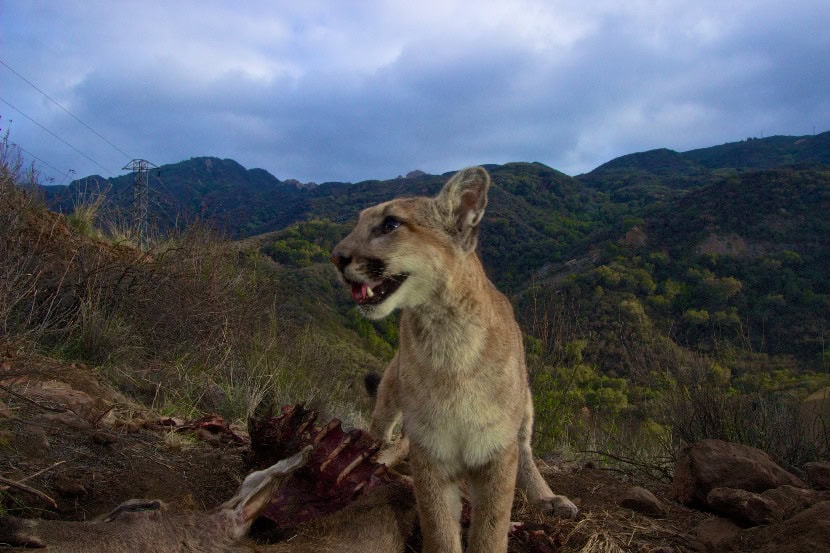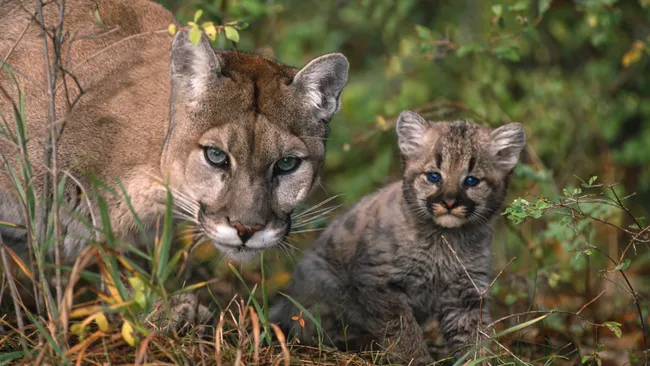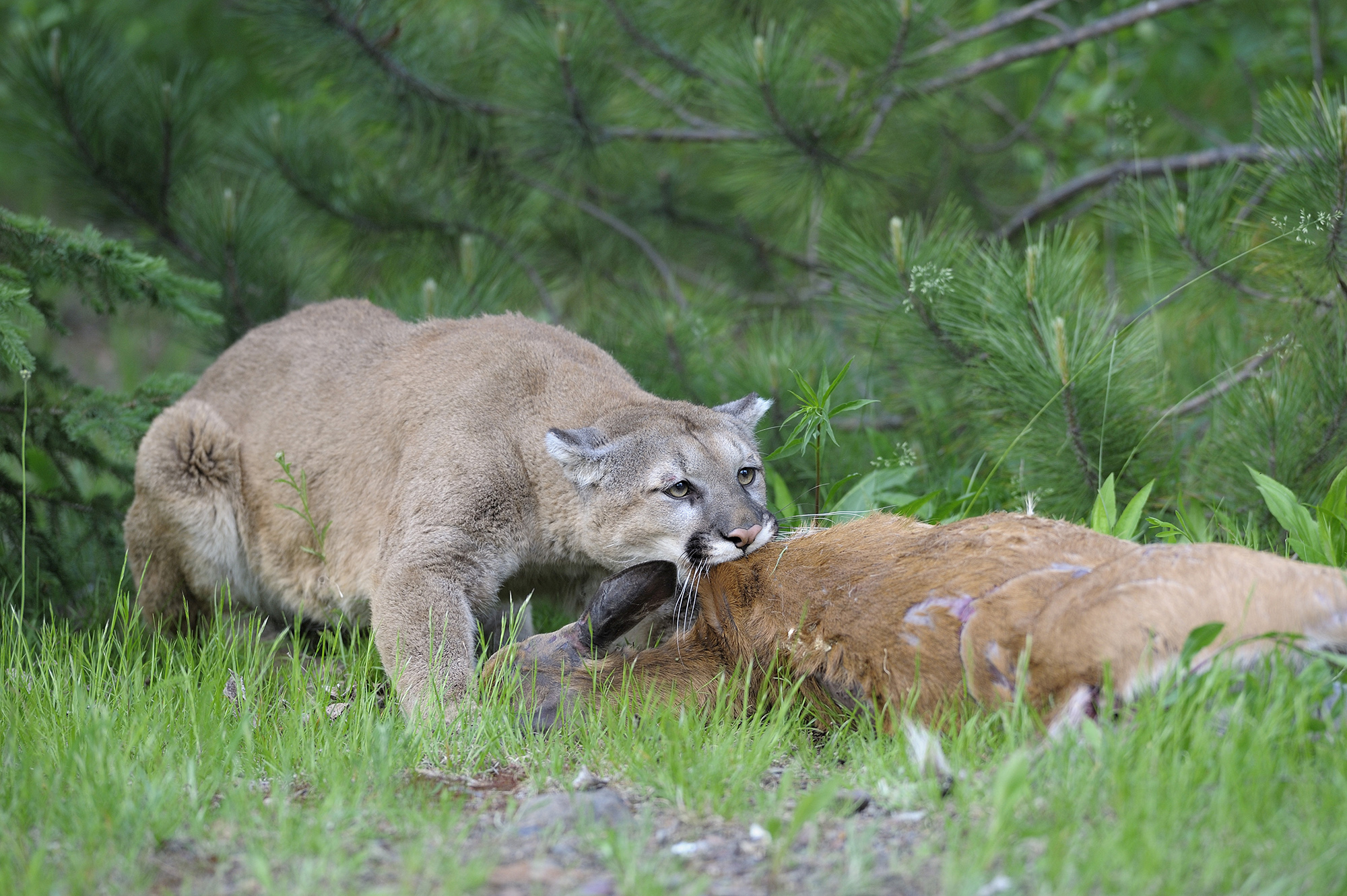Mountain lions in the greater Los Angeles area are more active at night in areas with higher levels of recreation.
“We can feel really hopeful about the fact that mountain lions are flexible in their timing of activity,” said TWS member Ellie Bolas, a PhD candidate at the University of California, Davis. “That probably helps them avoid us and contributes to coexistence between mountain lions and people in the greater LA area.”
The National Park Service at Santa Monica Mountains National Recreation Area has been studying the carnivores for over 20 years in the greater LA area to investigate how they are coexisting with urbanization and people.

What’s unique about LA, Bolas said, is that it’s one of the two megacities in the world that supports large felid predators—the other is Mumbai, India. “People in the greater LA area love being out in nature to hike, bike, or run, which is fantastic,” she said. “I also love recreating in these mountains. But that means that we’re sharing these natural spaces with wildlife.”
Since the high levels of recreation and urbanization in this system make it difficult for animals to move to locations that are not impacted by people, researchers wanted to learn how mountain lion (Puma concolor) activity may change in response to varying levels of recreation. Bolas and her collaborators, including a high school student and an undergraduate student, as well as other seasoned biologists, drew upon the long-term data collected by the National Park Service to answer their questions. Bolas also helped add to this dataset, working with Seth Riley and Jeff Sikich, both with the National Park Service, to capture mountain lions and collar them with GPS devices and accelerometers.

“If anyone gets to see a mountain lion in the wild, it’s amazing, even for those of us who are out in the field studying them,” she said. “It’s an incredible privilege and responsibility to conduct research that helps us learn more about mountain lions and how mountain lions and humans may coexist.”
Bolas and her team analyzed the mountain lion location and activity data along with publicly available information that recreationists recorded on the Strava app, where individuals document their hikes, bike rides, trail runs and other recreation.
In research Bolas presented at the 31st TWS Annual Conference in Baltimore and published in Biological Conservation, she and her colleagues found that overall, mountain lions living in areas with higher levels of human recreation—like Griffith Park or the Verdugo Mountains—shifted their activity toward the middle of the night and were less active around dawn or dusk. They also spent more time resting during daylight hours. “People are hiking and biking in the natural areas where mountain lions live, and so resting and being still are great ways to stay out of sight,” Bolas said.
The team uncovered less of a nocturnal pattern in female mountain lions than males, though.
That’s likely because females avoid male mountain lions, which can threaten kittens and themselves. “It’s possible that female lions are constrained by avoiding male mountain lions, so they don’t show as strong of a response toward recreation as the males,” she said.

Bolas said that the responsiveness of mountain lions to recreation is good news. “This is a very optimistic finding,” she said. “I think that we can be really appreciative of the flexibility of mountain lions in the timing of their activity and how that supports them using the same spaces as people.”
However, she said, mountain lions in the greater LA area face threats of habitat fragmentation, busy roadways, frequent wildfires, and exposure to rodenticides, so altering activity patterns may be adding another stressor to an already stressed population. “Animals need a certain amount of time in a 24-hour period to be active so they can hunt and travel and defend themselves,” she said. “While mountain lions are already nocturnal, changing the timing of activity or how active they are may be costing them in terms of energy available.”
But Bolas said that by simply being aware that they are sharing this space with wild animals, people can help support coexistence with mountain lions. “That can really come into play for people driving roads at night,” she said. “Vehicle collisions are a major source of mortality for mountain lions in and around LA, so slowing down can make a big difference.”
This article by Dana Kobilinsky was first published by The Wildlife Society on 21 November 2024. Lead Image: Female mountain lion, P65, walks with her kittens. Credit: National Park Service.
What you can do
Help to save wildlife by donating as little as $1 – It only takes a minute.







Leave a Reply